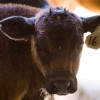 Cull vegetables can be an economical source of nutrients in beef cattle diets. They may be offered to beef cattle producers at a decreased cost or no cost. This 3-page fact sheet discusses the nutrient content and characteristics that need to be understood when utilizing cull vegetables. Written by Courtney Davis, Lindsey Wiggins, and Matt Hersom, and published by the UF Department of Animal Sciences, August 2012.
Cull vegetables can be an economical source of nutrients in beef cattle diets. They may be offered to beef cattle producers at a decreased cost or no cost. This 3-page fact sheet discusses the nutrient content and characteristics that need to be understood when utilizing cull vegetables. Written by Courtney Davis, Lindsey Wiggins, and Matt Hersom, and published by the UF Department of Animal Sciences, August 2012.
http://edis.ifas.ufl.edu/an280
Category: Agriculture
Bud Rot of Palm (PP220/PP144)
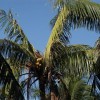 To understand bud rots, an explanation of palm anatomy is necessary. The growing point of the palm is often called the bud or heart. All leaves originate from there, and each palm stem has only one. Thus, when the bud is damaged or diseased, the palm usually dies. The first symptom is discoloration and wilting of the spear leaf and wilting/discoloration of the next youngest leaf. This 4-page fact sheet was written by Monica L. Elliott, and published by the UF Department of Plant Pathology, July 2012.
To understand bud rots, an explanation of palm anatomy is necessary. The growing point of the palm is often called the bud or heart. All leaves originate from there, and each palm stem has only one. Thus, when the bud is damaged or diseased, the palm usually dies. The first symptom is discoloration and wilting of the spear leaf and wilting/discoloration of the next youngest leaf. This 4-page fact sheet was written by Monica L. Elliott, and published by the UF Department of Plant Pathology, July 2012.
http://edis.ifas.ufl.edu/pp144
'Strawberry Star': A Spotted, Fancy-Leaved Caladium for Use in Containers and Landscapes (ENH1201/EP462)
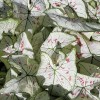 'Strawberry Star' is a fancy-leaved variety with a primarily white leaf face and attractive red spots. It is similar to 'Marie Moir' in leaf color and coloration pattern but different from 'Marie Moir' in petiole color. Compared to 'Marie Moir', 'Strawberry Star' sprouts earlier, produces high-quality container plants, demonstrates better landscape performance, and yields more tubers. These improvements make 'Strawberry Star' a desirable replacement for 'Marie Moir' and an additional sun-tolerant variety for the landscape plant palette. This 5-page fact sheet was written by Zhanao Deng, and published by the UF Department of Environmental Horticulture, August 2012.
'Strawberry Star' is a fancy-leaved variety with a primarily white leaf face and attractive red spots. It is similar to 'Marie Moir' in leaf color and coloration pattern but different from 'Marie Moir' in petiole color. Compared to 'Marie Moir', 'Strawberry Star' sprouts earlier, produces high-quality container plants, demonstrates better landscape performance, and yields more tubers. These improvements make 'Strawberry Star' a desirable replacement for 'Marie Moir' and an additional sun-tolerant variety for the landscape plant palette. This 5-page fact sheet was written by Zhanao Deng, and published by the UF Department of Environmental Horticulture, August 2012.
http://edis.ifas.ufl.edu/ep462
Protected Culture for Vegetable and Small Fruit Crops: The Soilless Trench System (HS1204)
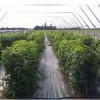 Vegetable and small fruit crop production under protective structures, such as greenhouses, high tunnels, and shade houses, often requires using soilless media to mitigate the impact of soilborne diseases, nematodes, and weeds, and it helps with management of fertilization and irrigation. Regardless of the nature and property of the media, they need to be held in containers to avoid direct contact with the soil or to elevate plants above the ground. An alternative to purchasing containers is building a soilless trench system for production of certain vegetables and small fruit crops. This 3-page fact sheet was written by Bielinski M. Santos and Teresa P. Salame-Donoso, and published by the UF Department of Horticultural Sciences, August 2012.
Vegetable and small fruit crop production under protective structures, such as greenhouses, high tunnels, and shade houses, often requires using soilless media to mitigate the impact of soilborne diseases, nematodes, and weeds, and it helps with management of fertilization and irrigation. Regardless of the nature and property of the media, they need to be held in containers to avoid direct contact with the soil or to elevate plants above the ground. An alternative to purchasing containers is building a soilless trench system for production of certain vegetables and small fruit crops. This 3-page fact sheet was written by Bielinski M. Santos and Teresa P. Salame-Donoso, and published by the UF Department of Horticultural Sciences, August 2012.
http://edis.ifas.ufl.edu/hs1204
Solutions for Managing Wastewater in Florida Tomato Packinghouses (SL372/SS573)
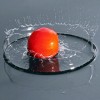 A large amount of wastewater is produced in Florida's packinghouses during the cleaning and sanitizing of tomatoes. High transportation costs for off-site disposal and strict surface water discharge regulations are critical issues associated with the management of this wastewater. This 4-page fact sheet provides solutions for increasing the reuse of wastewater in tomato packinghouses in Florida. Written by Gurpal Toor, Maninder Chahal, and Bielinski Santos, and published by the UF Department of Soil and Water Science, August 2012.
A large amount of wastewater is produced in Florida's packinghouses during the cleaning and sanitizing of tomatoes. High transportation costs for off-site disposal and strict surface water discharge regulations are critical issues associated with the management of this wastewater. This 4-page fact sheet provides solutions for increasing the reuse of wastewater in tomato packinghouses in Florida. Written by Gurpal Toor, Maninder Chahal, and Bielinski Santos, and published by the UF Department of Soil and Water Science, August 2012.
http://edis.ifas.ufl.edu/ss573
'Summer Pink': A New Pink, Fancy-Leaved Caladium Variety (ENH1200/EP461)
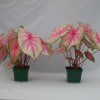 ‘Summer Pink’ is a new fancy-leaved caladium variety developed by the University of Florida’s Institute of Food and Agricultural Sciences (UF/IFAS) caladium breeding program for use in large containers and shady locations in the landscape (Deng and Harbaugh 2012). Leaves of this variety have a pink face and pink veins. In replicated field and greenhouse trials, ‘Summer Pink’ performed comparably or better than ‘Fannie Munson’ and ‘White Queen’, two pink caladium varieties commonly used in containers and landscapes. This 4-page fact sheet was written by Zhanao Deng, and published by the UF Department of Environmental Horticulture, August 2012.
‘Summer Pink’ is a new fancy-leaved caladium variety developed by the University of Florida’s Institute of Food and Agricultural Sciences (UF/IFAS) caladium breeding program for use in large containers and shady locations in the landscape (Deng and Harbaugh 2012). Leaves of this variety have a pink face and pink veins. In replicated field and greenhouse trials, ‘Summer Pink’ performed comparably or better than ‘Fannie Munson’ and ‘White Queen’, two pink caladium varieties commonly used in containers and landscapes. This 4-page fact sheet was written by Zhanao Deng, and published by the UF Department of Environmental Horticulture, August 2012.
http://edis.ifas.ufl.edu/ep461
Integrated Disease Management for Vegetable Crops in Florida (PP193/PP111)
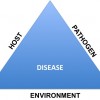 Integrated Pest Management (IPM) as applied to vegetable diseases means using all the tactics available to the grower (cultural, biological, host-plant resistance, field scouting, chemical) that provide acceptable yield and quality at the least cost and are compatible with the tenets of environmental stewardship. This 6-page fact sheet was written by Mathews Paret, Nick Dufault, Tim Momol, Jim Marois, and Steve Olson, and published by the UF Department of Plant Pathology, August 2012.
Integrated Pest Management (IPM) as applied to vegetable diseases means using all the tactics available to the grower (cultural, biological, host-plant resistance, field scouting, chemical) that provide acceptable yield and quality at the least cost and are compatible with the tenets of environmental stewardship. This 6-page fact sheet was written by Mathews Paret, Nick Dufault, Tim Momol, Jim Marois, and Steve Olson, and published by the UF Department of Plant Pathology, August 2012.
http://edis.ifas.ufl.edu/pp111
Entomopathogenic Nematodes (Nematoda: Rhabditida: families Steinernematidae and Heterorhabditidae) (EENY530/IN944)
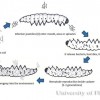 Entomopathogenic nematodes are soft bodied, non-segmented roundworms that are obligate or sometimes facultative parasites of insects. They occur naturally in soil environments and locate their host in response to carbon dioxide, vibration, and other chemical cues. They fit nicely into integrated pest management programs because they are nontoxic to humans, specific to their target pests, and can be applied with standard pesticide equipment. This 4-page fact sheet was written by Nastaran Tofangsazie, Steven P. Arthurs, and Robin M. Giblin-Davis, and published by the UF Department of Entomology and Nematology, August 2012.
Entomopathogenic nematodes are soft bodied, non-segmented roundworms that are obligate or sometimes facultative parasites of insects. They occur naturally in soil environments and locate their host in response to carbon dioxide, vibration, and other chemical cues. They fit nicely into integrated pest management programs because they are nontoxic to humans, specific to their target pests, and can be applied with standard pesticide equipment. This 4-page fact sheet was written by Nastaran Tofangsazie, Steven P. Arthurs, and Robin M. Giblin-Davis, and published by the UF Department of Entomology and Nematology, August 2012.
http://edis.ifas.ufl.edu/in944
Using Soils to Guide Fertilizer Recommendations for Southern Pines (CIR1230/FR053)
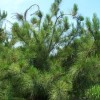 Soils supporting southern pine stands in the South tend to be infertile and nutrient additions are often required to achieve optimum rates of production. This 12-page publication describes and classifies soils of the southeastern Coastal Plain region and specifically addresses issues of fertility, growth-limiting nutrients, and fertilizer recommendations for southern pines. Written by Eric J. Jokela and Alan J. Long, and published by the UF Department of School of Forest Resources and Conservation, June 2012.
Soils supporting southern pine stands in the South tend to be infertile and nutrient additions are often required to achieve optimum rates of production. This 12-page publication describes and classifies soils of the southeastern Coastal Plain region and specifically addresses issues of fertility, growth-limiting nutrients, and fertilizer recommendations for southern pines. Written by Eric J. Jokela and Alan J. Long, and published by the UF Department of School of Forest Resources and Conservation, June 2012.
http://edis.ifas.ufl.edu/fr053
Economic Contributions of Agriculture, Natural Resources, and Related Industries in Florida for 2010 (FE906)
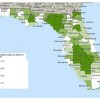 Agriculture, natural resources, and related industries remain a significant force in the economy of Florida, and it is important to recognize their economic contributions for informed public policy. The economic contributions of these industries were evaluated for 2010 to update previous reports and provide further information on economic trends in the wake of the historic global recession of 2007–2009. This 27-page report was written by Alan W. Hodges, Mohammad Rahmani, and Thomas J. Stevens, and published by the UF Department of Food and Resource Economics, August 2012.
Agriculture, natural resources, and related industries remain a significant force in the economy of Florida, and it is important to recognize their economic contributions for informed public policy. The economic contributions of these industries were evaluated for 2010 to update previous reports and provide further information on economic trends in the wake of the historic global recession of 2007–2009. This 27-page report was written by Alan W. Hodges, Mohammad Rahmani, and Thomas J. Stevens, and published by the UF Department of Food and Resource Economics, August 2012.
http://edis.ifas.ufl.edu/fe906
Potato Physiological Disorders – Internal Heat Necrosis (HS1145/HS395)
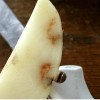 Internal heat necrosis is a physiological disorder that causes an unacceptable browning of the tuber tissue and can cause economic losses to the grower. The three leading suspected causes of IHN in tubers are high soil temperature, inadequate soil moisture, and suboptimal plant nutrition, or a combination of these factors. This 3-page fact sheet was written by Lincoln Zotarelli, Christine M. Worthington,Chad M. Hutchinson, Seth Byrd, Douglas Gergela, and Diane Rowland, and published by the UF Department of Horticultural Sciences, July 2012. http://edis.ifas.ufl.edu/hs395
Internal heat necrosis is a physiological disorder that causes an unacceptable browning of the tuber tissue and can cause economic losses to the grower. The three leading suspected causes of IHN in tubers are high soil temperature, inadequate soil moisture, and suboptimal plant nutrition, or a combination of these factors. This 3-page fact sheet was written by Lincoln Zotarelli, Christine M. Worthington,Chad M. Hutchinson, Seth Byrd, Douglas Gergela, and Diane Rowland, and published by the UF Department of Horticultural Sciences, July 2012. http://edis.ifas.ufl.edu/hs395
Identification and Control of Johnsongrass, Vaseygrass, and Guinea Grass in Pastures (SSAGR363/AG372)
 Johnsongrass is a common weed throughout the South and Midwest. People often incorrectly call any weed johnsongrass, but it is one of three grasses found in Florida pastures. Knowing the differences between johnsongrass, vaseygrass, and guinea grass will help with proper weed management. This 3-page fact sheet was written by H. Smith, J. Ferrell, and B. Sellers, and published by the UF Agronomy Department, August 2012. http://edis.ifas.ufl.edu/ag372
Johnsongrass is a common weed throughout the South and Midwest. People often incorrectly call any weed johnsongrass, but it is one of three grasses found in Florida pastures. Knowing the differences between johnsongrass, vaseygrass, and guinea grass will help with proper weed management. This 3-page fact sheet was written by H. Smith, J. Ferrell, and B. Sellers, and published by the UF Agronomy Department, August 2012. http://edis.ifas.ufl.edu/ag372
Agricultural Management Options for Climate Variability and Change: Sod-Based Rotation (AE492)
 A sod-based rotation is when a producer adapts a conventional peanut/cotton rotation by growing a perennial grass, such as bahiagrass, during two years of the rotation. The perennial grass can be grazed, cut for hay or harvested for seed for additional income. Using a sod-based rotation can improve soil water-holding capacity and potentially reduce impacts of dry spells and droughts. This 4-page fact sheet was written by David Wright, Jim Marois, Clyde Fraisse, and Daniel Dourte, and published by the UF Department of Agricultural and Biological Engineering, August 2012. http://edis.ifas.ufl.edu/ae492
A sod-based rotation is when a producer adapts a conventional peanut/cotton rotation by growing a perennial grass, such as bahiagrass, during two years of the rotation. The perennial grass can be grazed, cut for hay or harvested for seed for additional income. Using a sod-based rotation can improve soil water-holding capacity and potentially reduce impacts of dry spells and droughts. This 4-page fact sheet was written by David Wright, Jim Marois, Clyde Fraisse, and Daniel Dourte, and published by the UF Department of Agricultural and Biological Engineering, August 2012. http://edis.ifas.ufl.edu/ae492
Agricultural Management Options for Climate Variability and Change: AgroClimate (AE491)
 AgroClimate is a website providing climate information and decision-support tools to producers throughout the Southeastern United States. With information from the site, producers can develop a strategy for the coming season and track climate conditions that affect crop development and yield. This 4-page fact sheet was written by Clyde Fraisse, and published by the UF Department of Agricultural and Biological Engineering, August 2012. http://edis.ifas.ufl.edu/ae491
AgroClimate is a website providing climate information and decision-support tools to producers throughout the Southeastern United States. With information from the site, producers can develop a strategy for the coming season and track climate conditions that affect crop development and yield. This 4-page fact sheet was written by Clyde Fraisse, and published by the UF Department of Agricultural and Biological Engineering, August 2012. http://edis.ifas.ufl.edu/ae491
Phosphorus Fertilizer Recommendations for Sugarcane Production on Florida Organic Soils (SSAGR348/SC091)
 Much of the sugarcane grown in South Florida is on organic soils in the Everglades Agricultural Area, which is a phosphorus-limited system. Phosphorus loads in drainage water in the Everglades Agricultural Area are an environmental concern so it is important for sugarcane growers to use best management practices such as soil testing and to follow fertilizer recommendations. This document contains updated UF/IFAS phosphorus fertilizer recommendations for Florida organic soils. This 7-page fact sheet was written by J. Mabry McCray, Ronald W. Rice, and Alan L. Wright, and published by the UF Department of Agronomy, July 2012. http://edis.ifas.ufl.edu/sc091
Much of the sugarcane grown in South Florida is on organic soils in the Everglades Agricultural Area, which is a phosphorus-limited system. Phosphorus loads in drainage water in the Everglades Agricultural Area are an environmental concern so it is important for sugarcane growers to use best management practices such as soil testing and to follow fertilizer recommendations. This document contains updated UF/IFAS phosphorus fertilizer recommendations for Florida organic soils. This 7-page fact sheet was written by J. Mabry McCray, Ronald W. Rice, and Alan L. Wright, and published by the UF Department of Agronomy, July 2012. http://edis.ifas.ufl.edu/sc091
Quick Sheet: Insecticides and Miticides Recommended for Use in the Florida Citrus Pest Management Guide (ENY854/IN807)
 This document is a two-page quick reference guide to citrus insecticides and miticides recommended in the Florida Citrus Pest Management Guide, their effects on important citrus pests, and their natural enemies. Written by M.E. Rogers, P.A. Stansly, L.L. Stelinski, and J.D. Yates, and published by the UF Department of Entomology and Nematology, January 2012.
This document is a two-page quick reference guide to citrus insecticides and miticides recommended in the Florida Citrus Pest Management Guide, their effects on important citrus pests, and their natural enemies. Written by M.E. Rogers, P.A. Stansly, L.L. Stelinski, and J.D. Yates, and published by the UF Department of Entomology and Nematology, January 2012.
http://edis.ifas.ufl.edu/in807
Postharvest Quality and Decay Incidence among Tomato Fruit as Affected by Weather and Cultural Practices. (PP294)
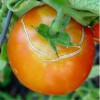 Postharvest decay losses for field-grown, fresh-market tomatoes are usually associated with harvests that occur when fields are wet and warm. During periods of persistently wet fields, decay pathogens infect damaged fruit on the plant as well as injuries to petioles and stems. Review of all reports and photos implicated excessive water in fruit rather than air temperatures as the primary predisposition. Excessive water in fruit is possible at virtually any time of the season and can appear at times of cold as well as warm field temperatures. This 8-page fact sheet was written by Jerry A. Bartz, Steven A. Sargent, and John W. Scott, and published by the UF Department of Plant Pathology, July 2012.
Postharvest decay losses for field-grown, fresh-market tomatoes are usually associated with harvests that occur when fields are wet and warm. During periods of persistently wet fields, decay pathogens infect damaged fruit on the plant as well as injuries to petioles and stems. Review of all reports and photos implicated excessive water in fruit rather than air temperatures as the primary predisposition. Excessive water in fruit is possible at virtually any time of the season and can appear at times of cold as well as warm field temperatures. This 8-page fact sheet was written by Jerry A. Bartz, Steven A. Sargent, and John W. Scott, and published by the UF Department of Plant Pathology, July 2012.
http://edis.ifas.ufl.edu/pp294
Identificacion de los sintomas del cancro citrico y procedimientos de descontaminacion (PP214SP/PP138)
 El cancro cítrico es una seria enfermedad de los cítricos. La mayoría de los cultivos de cítricos son susceptibles, la toronja, la lima mejicana y algunas naranjas tempranas son las más susceptibles. Una infección severa puede causar defoliación, una muerte regresiva de la rama, una decadencia general del árbol, una caída prematura de la fruta, y manchas en la misma. Los árboles severamente infectados se vuelven débiles, improductivos y no rentables. This 5-page fact sheet was written by Mongi Zekri, Megan Dewdney, Jamie Burrow, and Pamela Roberts, and published by the UF Department of Plant Pathology, August 2012.
El cancro cítrico es una seria enfermedad de los cítricos. La mayoría de los cultivos de cítricos son susceptibles, la toronja, la lima mejicana y algunas naranjas tempranas son las más susceptibles. Una infección severa puede causar defoliación, una muerte regresiva de la rama, una decadencia general del árbol, una caída prematura de la fruta, y manchas en la misma. Los árboles severamente infectados se vuelven débiles, improductivos y no rentables. This 5-page fact sheet was written by Mongi Zekri, Megan Dewdney, Jamie Burrow, and Pamela Roberts, and published by the UF Department of Plant Pathology, August 2012.
http://edis.ifas.ufl.edu/pp138
Mancha negra de los citricos (PP295)

Este documento es una hoja de dos páginas ilustrativas para la identificación de la mancha negra de los cítricos. This 2-page fact sheet was written by Megan M. Dewdney and Natalia A. Peres, and published by the UF Department of Plant Pathology, August 2012. http://edis.ifas.ufl.edu/pp295
Enfermedades Exoticos de los Citricos (PP296)
 Este documento es una hoja de dos páginas ilustrativas para la identificación de las enfermedades exóticas de los cítricos. This 2-page fact sheet was written by M. M. Dewdney, J. D. Burrow, M.E. Rogers, and T. M. Spann, and published by the UF Department of Plant Pathology, August 2012.
Este documento es una hoja de dos páginas ilustrativas para la identificación de las enfermedades exóticas de los cítricos. This 2-page fact sheet was written by M. M. Dewdney, J. D. Burrow, M.E. Rogers, and T. M. Spann, and published by the UF Department of Plant Pathology, August 2012.
http://edis.ifas.ufl.edu/pp296